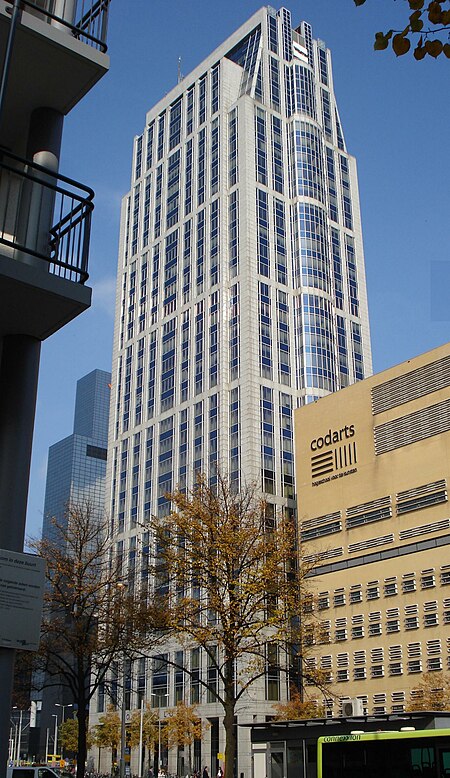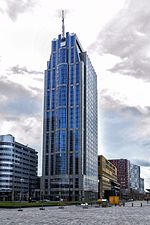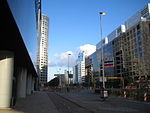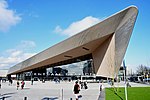Millennium Tower (Rotterdam)
Buildings and structures celebrating the third millenniumBuildings and structures in RotterdamEmporis template using building IDHotel buildings completed in 2000Office buildings completed in 2000 ... and 5 more
Residential skyscrapers in the NetherlandsSkyscraper hotels in the NetherlandsSkyscraper office buildings in the NetherlandsSkyscrapers in the NetherlandsWZMH Architects buildings

Millennium Tower is a 35-story, 130.8 m (429 ft) skyscraper in Rotterdam, Netherlands design by WZMH Architects and AGS Architecten. It was completed in 2000. The tower was built on Weena in front of the Central station. It is currently mixed use, the first 15 floors belong to the Rotterdam Marriott Hotel, including 2 restaurant, the other floor are being used as offices.
Excerpt from the Wikipedia article Millennium Tower (Rotterdam) (License: CC BY-SA 3.0, Authors, Images).Millennium Tower (Rotterdam)
Kruisstraat, Rotterdam Centrum
Geographical coordinates (GPS) Address Website External links Nearby Places Show on map
Geographical coordinates (GPS)
| Latitude | Longitude |
|---|---|
| N 51.9225 ° | E 4.4715 ° |
Address
Millenniumtoren
Kruisstraat
3012 CV Rotterdam, Centrum
South Holland, Netherlands
Open on Google Maps











